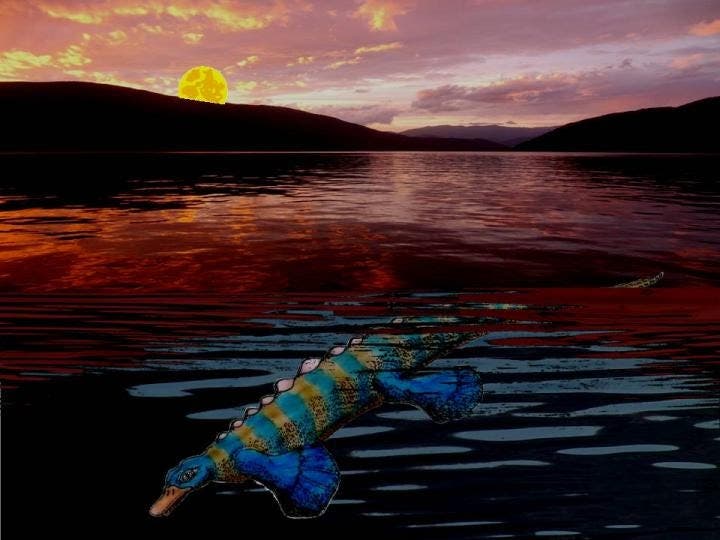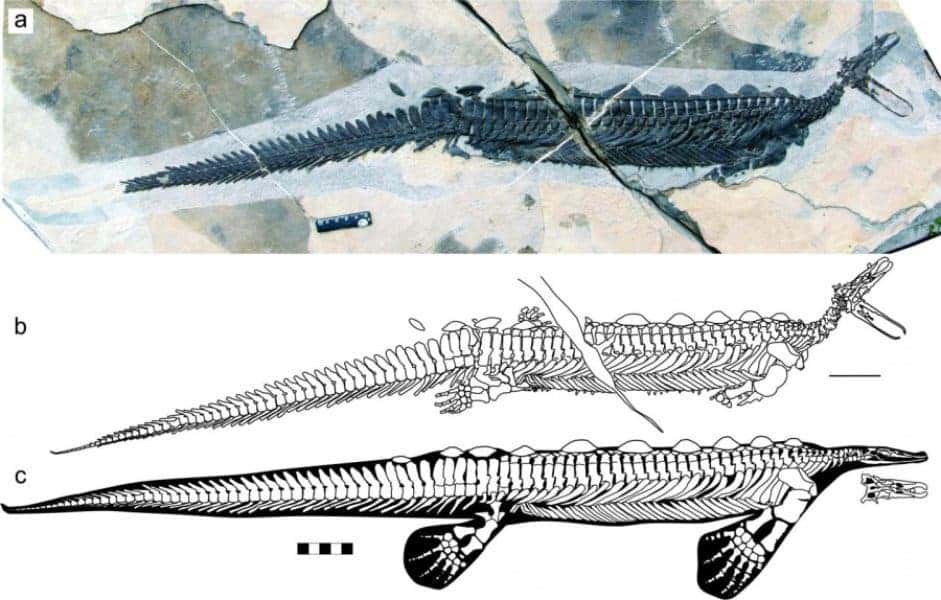The platypus is one of the most awkward creatures in the animal kingdom. Part duck, part reptile, part mammal, the platypus is famous for being one of the few mammals in the world that lays eggs. Remarkably, some of its features are shared by an ancient platypus-like reptile called Eretmorhipis carrolldongi, which lived around 250 million years ago — not too long after a devastating mass extinction.

Artist impression of Eretmorhipis carrolldongi. Credit: Gianluca Danini.
Researchers had known about E. carrolldongi for decades but the excavated specimens lacked skulls. it was only recently that Chinese paleontologists at the Wuhan Centre of China Geological Survey found specimens with complete skulls in Hubei province — and it looks like the skull was quite an important puzzle piece.
“This is a very strange animal,” Ryosuke Motani, a paleontologist at the University of California and co-author of the new study, said in a statement. “When I started thinking about the biology I was really puzzled.”
Judging by the shape of its skull, Eretmorhipis must have accommodated a bill of cartilage. And just like the modern platypus, the Triassic creature had large holes in the bones of the middle of the bill, suggesting a shared function. In the platypus, the bill is equipped with receptors that allow it to hunt prey by touching it in muddy streams. Because visibility is low, the platypus also has very small eyes.
Eretmorhipis, which also had small eyes, likely evolved this feature because it shared a similar environment to the platypus. The ancient reptile lived in an area covered by a shallow sea only a meter deep, which rested on a carbonate platform. Researchers presume its diet consisted of shrimp, worms, and other invertebrates.
Other defining features include four flippers for swimming and steering and bony plates which ran down the animal’s back. Eretmorhipis was likely a poor swimmer though, judging from its long and rigid body.
“It wouldn’t survive in the modern world, but it didn’t have any rivals at the time,” Motani said.
Eretmorhipis wasn’t related in any way to the platypus’ monotreme lineage but rather with the dolphin-like ichthyosaurs.
The findings appeared in the journal Scientific Reports.










